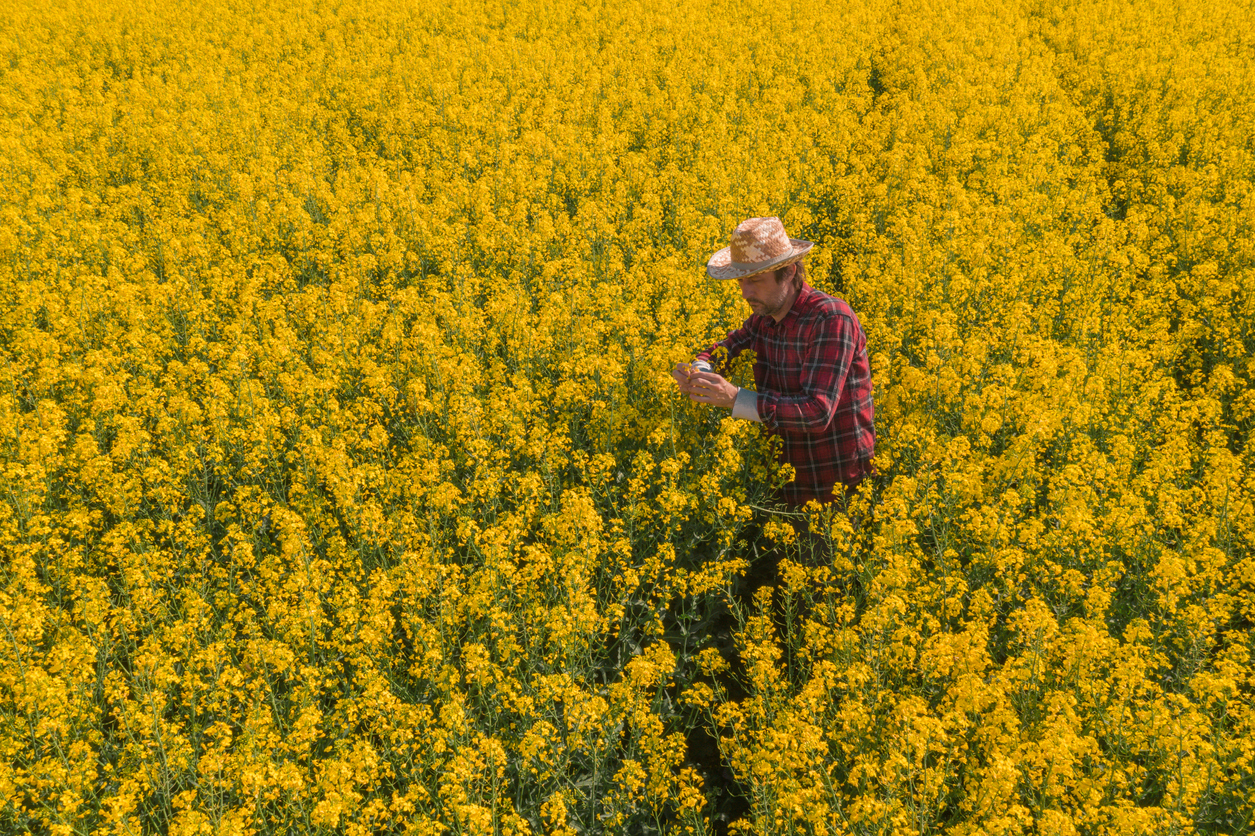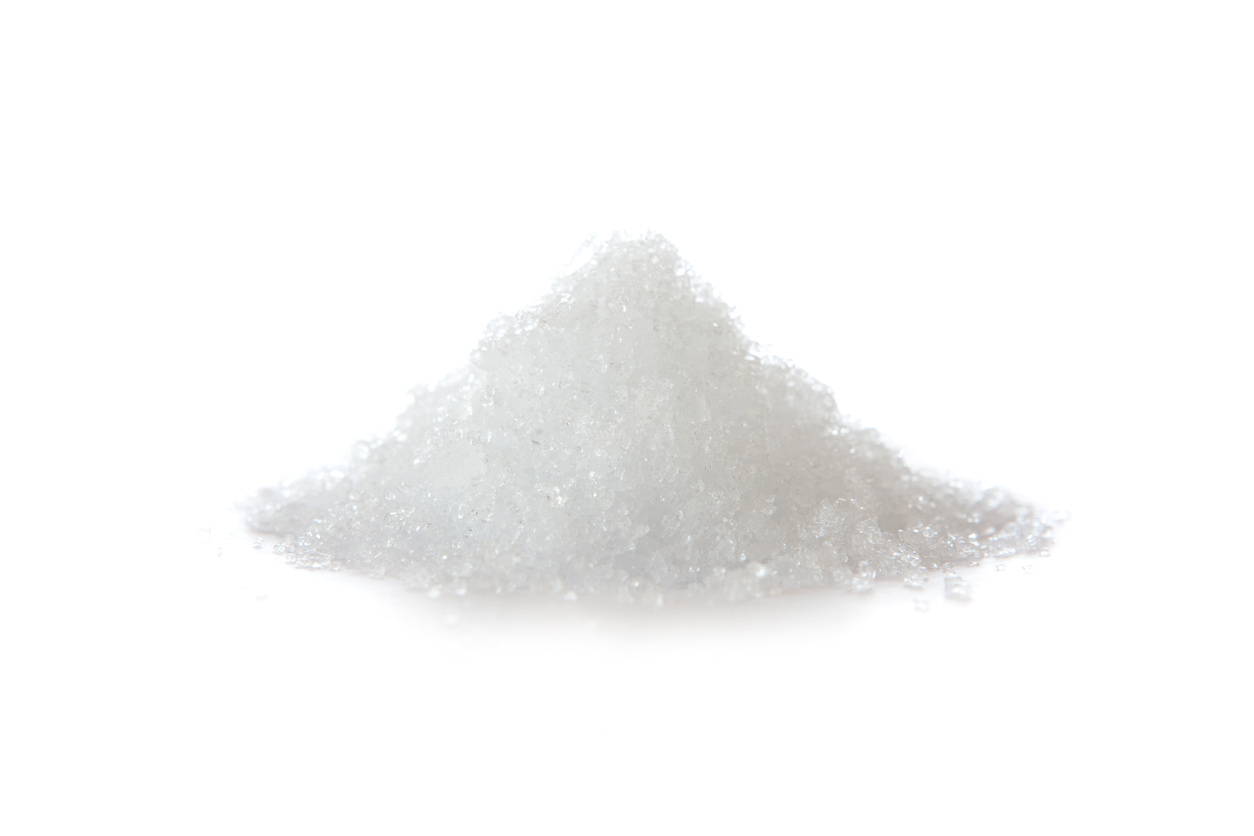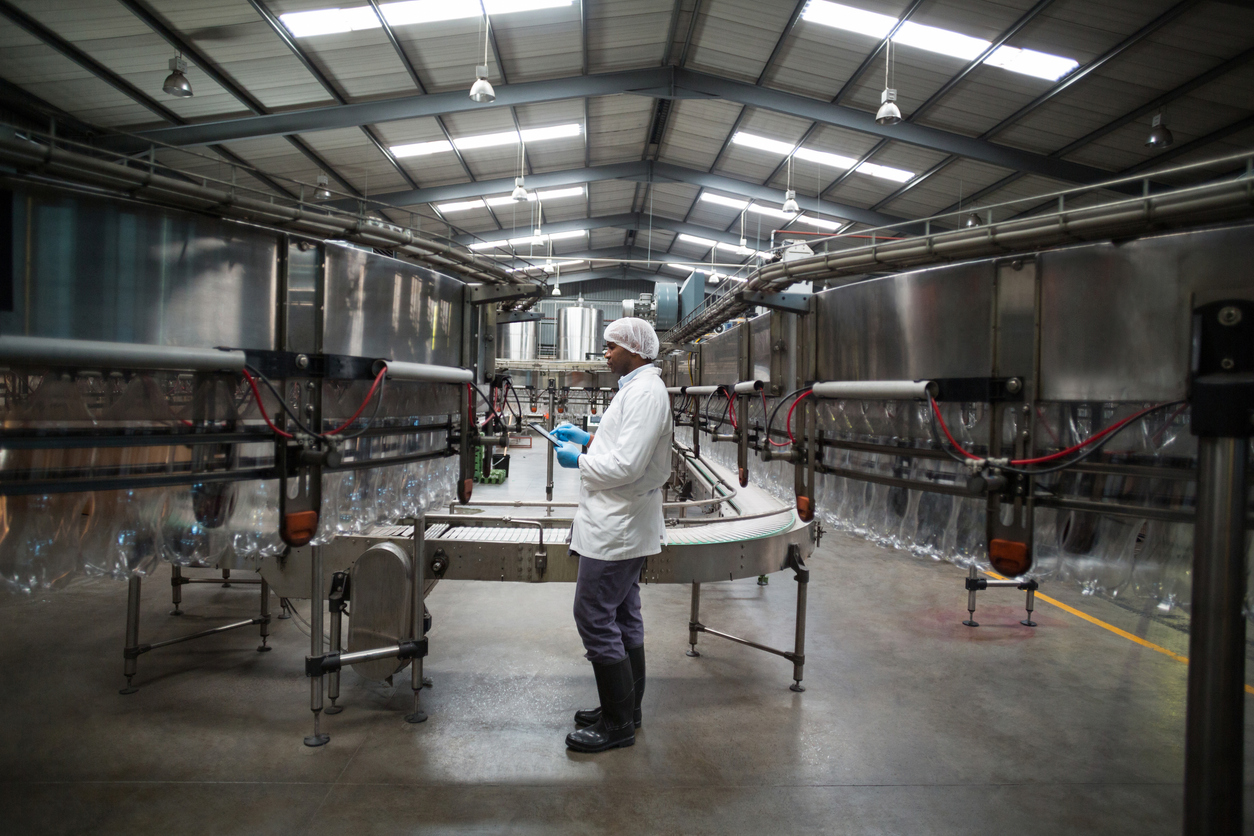Exploring the Leading Canola Producers Worldwide: Who Grows the Most?
Exploring the Leading Canola Producers Worldwide: Who Grows the Most?
Have you ever wondered which countries dominate the global canola industry? From its humble origins to becoming a staple in kitchens around the world, canola oil has become a household name. In this blog post, we dive into the fascinating world of canola production and explore the leading producers worldwide. Get ready to uncover who grows the most as we take you on an exciting journey through lush fields and bustling farms across the globe!
Introduction to Canola and Its Importance as a Crop
Canola, also known as rapeseed, is a versatile and important crop that has been gaining popularity in recent years. It is a member of the Brassica family and is closely related to other cruciferous vegetables such as broccoli, cauliflower, and cabbage.
The name “canola” was derived from “Canadian oil, low acid”, highlighting its Canadian origins and its low levels of erucic acid, a harmful compound found in traditional rapeseed varieties. Canola was first developed in the early 1970s through cross-breeding techniques to create a plant with lower levels of erucic acid and glucosinolates, making it safe for human consumption.
Today, canola is one of the most widely grown crops in the world, with over 35 million hectares planted annually. It is primarily grown for its oil-rich seeds but every part of the plant can be utilized – from the leaves and stems used for animal feed to the roots that help improve soil health.
One of the main reasons for canola’s popularity is its high oil content. Canola seeds contain approximately 40% oil which makes it an excellent source of vegetable oil. This oil is not only used for cooking but also in various industries such as biofuel production and cosmetics.
Another significant factor contributing to canola’s importance as a crop is its nutritional value. Canola oil has a good balance of fatty acids including omega-3 and omega-6 essential fatty acids which have numerous health benefits such
Top 5 Canola Producing Countries in the World
Canola, also known as rapeseed, is one of the most widely produced oilseed crops in the world. It has gained popularity due to its high nutritional value and versatile uses. From cooking oil to biodiesel fuel, canola has become an essential commodity in many countries across the globe.
But which countries are leading the way in canola production? Let’s take a look at the top five canola producing countries in the world.
1. Canada
Canada is by far the largest producer of canola, accounting for approximately 70% of global production. In 2019 alone, Canada produced over 20 million metric tons of canola. The country’s climate and fertile land make it an ideal location for growing this crop. Saskatchewan and Alberta provinces are among the top regions where canola is grown in large quantities.
2. China
China comes second on our list with an estimated production of around 15 million metric tons annually. Canola cultivation was introduced to China from Canada in the early 1980s and has since become a major crop for farmers in Heilongjiang province, located near Russia’s border.
3. India
India is another significant producer of canola with an output of approximately 8 million metric tons per year. The majority of canola production takes place in western states such as Rajasthan, Gujarat, and Haryana, where climatic conditions are favorable for growing this crop.
– Canada
Canada is one of the world’s leading producers of canola, accounting for approximately 20% of global production. The country has a long history with canola, as it was first developed and grown in Canada in the 1970s. Today, Canada is home to over 43,000 canola farmers who collectively produce around 18 million metric tons of canola every year.
The majority of Canada’s canola production comes from the western provinces of Alberta, Saskatchewan, and Manitoba. These regions have a combination of fertile soil, suitable climate conditions, and advanced farming techniques that make them ideal for growing canola. Additionally, the vast open spaces in these provinces allow for large-scale farming operations.
One of the key factors contributing to Canada’s success in the canola industry is its strong research and development programs. The Canola Council of Canada invests millions of dollars each year into developing new varieties with higher yields, disease resistance, and improved quality. This continuous innovation has led to significant advancements in Canadian canola production over the years.
Another crucial aspect that sets Canada apart as a leading producer is its strict quality control measures. The Canadian Grain Commission inspects all export shipments to ensure they meet strict standards for purity and quality. As a result, Canadian canola is highly regarded worldwide for its consistent high quality.
– China
China, also known as the People’s Republic of China, is a leading producer of canola in the world. With its massive land area and favorable climatic conditions, China has emerged as one of the top producers of this versatile crop.
The History of Canola Production in China:
Canola production in China dates back to the 1980s when it was introduced as an alternative oilseed crop to reduce the country’s reliance on imported oils. Initially, canola was grown in only a few regions like Heilongjiang Province, but due to its success and high demand, it quickly spread to other provinces. Today, canola is widely cultivated across China’s major agricultural areas such as Hebei, Shandong, Sichuan, and Inner Mongolia.
Climatic Conditions for Canola Production:
One of the primary reasons for China’s success in canola production is its diverse climatic conditions. The country experiences a wide range of climates from subtropical to subarctic zones. This diversity allows for year-round cultivation of different varieties of canola. For instance, winter canola is predominantly grown in northern regions with cold winters while spring canola thrives in warmer climates found in southern provinces.
– India
India is one of the leading producers of canola in the world. Located in South Asia, it is the seventh largest country by land area and second most populous country with over 1.3 billion people. The Indian agriculture sector contributes significantly to its economy, providing employment to more than half of the population.
Canola production in India started in the late 1970s when it was introduced as a substitute for rapeseed, which was being imported at that time. Since then, canola production has steadily increased and today, India ranks among the top five countries in terms of canola production.
One of the main reasons for India’s success in canola production is its favorable climate and geographical conditions. Canola crops thrive well in regions with moderate temperatures and good rainfall, both of which are present in various parts of India. The northern states such as Rajasthan, Punjab, Haryana, Uttar Pradesh, and Madhya Pradesh are major producers of canola due to their suitable climatic conditions.
Another factor contributing to India’s high yield of canola is its advanced agricultural practices and infrastructure. Farmers have access to modern technologies such as improved seeds, efficient irrigation systems, and mechanized farming techniques that help increase productivity. The government also provides subsidies on fertilizers and other inputs to support farmers.
– Australia
Australia is a major player in the global canola production, ranking among the top five leading canola producers worldwide. The country’s favorable climate and advanced agricultural techniques have made it an ideal location for growing canola, resulting in high yields and quality crops.
Canola production in Australia began in the 1960s when Canadian scientists developed a new variety of rapeseed that was low in erucic acid and glucosinolates, making it suitable for human consumption. This new variety, known as canola, was introduced to Australia and quickly gained popularity due to its versatility and nutritional value.
Today, Australia produces around 3 million tons of canola annually, with the majority of production taking place in the southern states of New South Wales, Victoria, and South Australia. These regions offer optimal conditions for growing canola such as cool temperatures during flowering and warm summers for ripening.
One factor that sets Australian canola apart from other leading producers is its strict quality standards. The country has stringent regulations on pesticide use and chemical residues, ensuring that only high-quality canola reaches the market. This has allowed Australian farmers to establish a reputation for producing safe and premium-grade canola globally.
Another key advantage for Australian growers is their access to modern farming technology. Many farms are equipped with state-of-the-art irrigation systems, precision agriculture tools, and advanced machinery that helps improve efficiency and reduce costs.
– Germany
Germany is one of the top producers of canola in the world, ranking among the leading countries in terms of production and export. With a long history of agricultural expertise and advanced technology, Germany has been able to establish itself as a major player in the global market for canola.
The cultivation of canola in Germany dates back to the 19th century when it was first introduced as a crop for animal feed. However, it wasn’t until the 1960s that canola production started gaining momentum with advancements in breeding and genetic engineering techniques. Today, Germany produces over 3 million tonnes of canola annually, making it one of the largest producers globally.
One of the main reasons for Germany’s success in canola production is its favorable climate. The country has mild temperatures throughout most parts of the year, which are ideal for growing rapeseed (the primary source for canola oil). The fertile soils found in regions such as Saxony-Anhalt, Lower Saxony, and North Rhine-Westphalia also contribute to high yields.
Moreover, German farmers have access to modern machinery and technologies that help optimize their farming practices. For instance, precision agriculture techniques are widely used to monitor crop health and soil moisture levels accurately. This allows farmers to make informed decisions about irrigation and fertilization schedules, leading to better yields and reduced costs.
Furthermore, Germany has implemented strict regulations on agricultural practices aimed at protecting natural resources like land and water.
Factors Contributing to High Canola Production in Each Country
Canola production is a major industry worldwide, with several countries playing a significant role in its cultivation and export. Canada, China, India, and Australia are among the top producers of canola globally. Each country has unique factors contributing to their high canola production.
1. Canada:
Canada is the largest producer of canola in the world, accounting for approximately 60% of global production. The favorable climate and vast agricultural land make it an ideal location for growing canola. Additionally, advanced farming techniques and modern machinery have significantly boosted production in recent years.
Another crucial factor contributing to Canada’s high canola production is government support. The Canadian government has implemented policies that promote sustainable agriculture practices and provide incentives to farmers who grow canola. This support has helped farmers invest in technology and research, leading to increased yields.
Moreover, Canada’s strong trade relationships have also contributed to its high canola production. Being a member of the North American Free Trade Agreement (NAFTA) allows for easy access to export markets such as the United States and Mexico.
2. China:
China is the second-largest producer of canola globally, accounting for around 15% of total world production. The country’s immense population demands a large supply of cooking oil, making it a significant consumer market for cooking oils like canola oil.
– Climate and Geography
When it comes to canola production, climate and geography play a crucial role in determining the success and yield of this crop. Canola is a cool-season crop that thrives in temperate regions with mild summers and cold winters. As such, the leading canola producers are found in areas with specific climatic conditions.
Geographically, canola requires well-drained soil with good moisture retention capabilities. This makes countries with fertile soils and adequate rainfall ideal for canola cultivation. Let’s take a closer look at some of the top canola-producing regions worldwide and explore their unique climates and geographies.
Canada is the world’s largest producer of canola, accounting for over 20 million tons annually. Most of Canada’s canola is grown on the prairies, which covers an area of approximately 22 million hectares. The prairies have unique geographical features such as rolling hills, vast plains, and fertile soils – all essential elements for successful canola cultivation. The climate in this region is characterized by long cold winters and short cool summers that provide ideal growing conditions for canola.
China follows closely behind Canada as the second-largest producer of canola globally. China’s main production areas are located in northeastern provinces such as Heilongjiang, Jilin, Liaoning, Inner Mongolia, etc. These regions boast diverse landscapes ranging from flat plains to mountains that provide various microclimates suitable for growing different varieties of canola.
– Agriculture Policies and Practices
Agriculture policies and practices play a crucial role in the production of canola, as well as in any agricultural industry. These policies and practices are put in place by governments to regulate and support the growth and development of the agriculture sector. In this section, we will take a closer look at the various agriculture policies and practices that have contributed to making certain countries top producers of canola.
1. Subsidies for Canola Production
One of the main reasons why some countries produce more canola than others is due to government subsidies. These subsidies provide financial incentives for farmers to grow crops such as canola, thus increasing their overall production. For instance, Canada has been implementing a subsidy program for canola farmers since the 1980s, which has helped them become one of the leading producers worldwide.
2. Crop Rotation Practices
Crop rotation refers to the practice of planting different crops in succession on a particular piece of land. This helps replenish soil nutrients, which are vital for crop growth and yields. In the case of canola production, farmers often rotate with other crops such as wheat or barley to maintain soil health and reduce disease pressure on their fields.
3. Integrated Pest Management (IPM)
Canola is susceptible to various pests and diseases that can significantly decrease yields if not managed properly. Many leading canola-producing countries have implemented integrated pest management techniques to combat these issues sustainably.
– Market Demand for Canola Oil
Market Demand for Canola Oil:
Canola oil has become a popular cooking oil in households all over the world due to its numerous health benefits and versatile uses in the kitchen. As global awareness about healthy eating habits continues to increase, the demand for canola oil has been steadily rising.
One of the main reasons for canola oil’s popularity is its low content of saturated fats, making it a healthier option compared to other vegetable oils. It is also high in monounsaturated and polyunsaturated fats, which are considered “good” fats that help lower cholesterol levels and reduce the risk of heart disease.
The growing trend towards plant-based diets has also contributed to the increasing demand for canola oil. Being derived from rapeseeds, which are a type of plant, canola oil is often perceived as a more natural and sustainable choice compared to animal-based oils like butter or lard.
In addition to its health benefits, canola oil’s neutral taste makes it suitable for various cooking methods such as frying, baking, and salad dressings. This versatility has led to its widespread use in both commercial food production and home cooking.
Canada is currently the largest producer of canola oil globally, accounting for over 50% of total production. The United States follows closely behind at second place with approximately 20% of global production. Other leading producers include China, Australia, India, and European countries such as France and Germany.
Comparison of Production Numbers and Trends
Canola production is a major contributor to the global agricultural market, with millions of tons being produced each year. However, not all countries have equal levels of canola production. In this section, we will compare the production numbers and trends of the top canola producing countries in the world.
1. Canada:
Canada is by far the largest producer of canola in the world, accounting for approximately 60% of global production. The country has been a dominant player in the canola industry since its commercial cultivation began in 1940. In 2020, Canada produced over 20 million metric tons of canola, a slight decrease from its record-breaking production of 21 million metric tons in 2019.
One of the main reasons for Canada’s high canola production is its favorable climate and fertile land. The Canadian Prairies, which include Alberta and Saskatchewan, are known for their nutrient-rich soil and ideal growing conditions for canola. Additionally, strong government support and investments in research and development have helped to increase productivity and yield.
2. China:
China ranks second on the list of top canola producers globally, with an annual output of around 15 million metric tons. The country’s demand for edible oil has led to a significant increase in its canola production over the years. China primarily grows hybrid varieties that have been specifically developed to suit their climatic conditions.
Impact of Canola Production on the Economy and Environment
Canola production has become a significant contributor to both the global economy and the environment. It is one of the most widely grown oilseed crops in the world, with an estimated 74 million metric tons produced annually. In this section, we will delve into the impact that canola production has on both economic growth and environmental sustainability.
Economic Impact:
Canola is a major source of income for many countries around the world. Canada, China, India, and Australia are among the top producers of canola globally. These countries rely heavily on canola production as a source of revenue and employment opportunities.
One of the main reasons for canola’s economic significance is its versatile use. Canola oil is used in various industries such as food, cosmetics, biofuel, and even industrial lubricants. The crop also produces meal which is used as animal feed. This diversification makes it an attractive commodity for trade and export.
Moreover, canola production contributes significantly to rural economies by providing job opportunities for farmers and workers involved in planting, harvesting, processing, packaging, and transportation of the crop. In Canada alone, over 250 thousand jobs are linked to canola production.
Furthermore, increased demand for healthy oils has led to higher prices for canola oil in recent years. This trend has boosted profits for farmers and encouraged them to expand their cultivation areas further.
Environmental Impact:
While canola production brings numerous economic benefits to countries that grow it; it also has a positive impact on environmental sustainability.








Comments are closed.